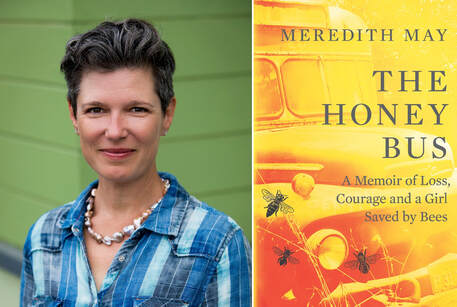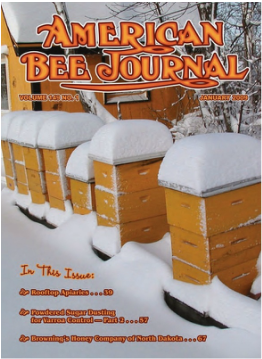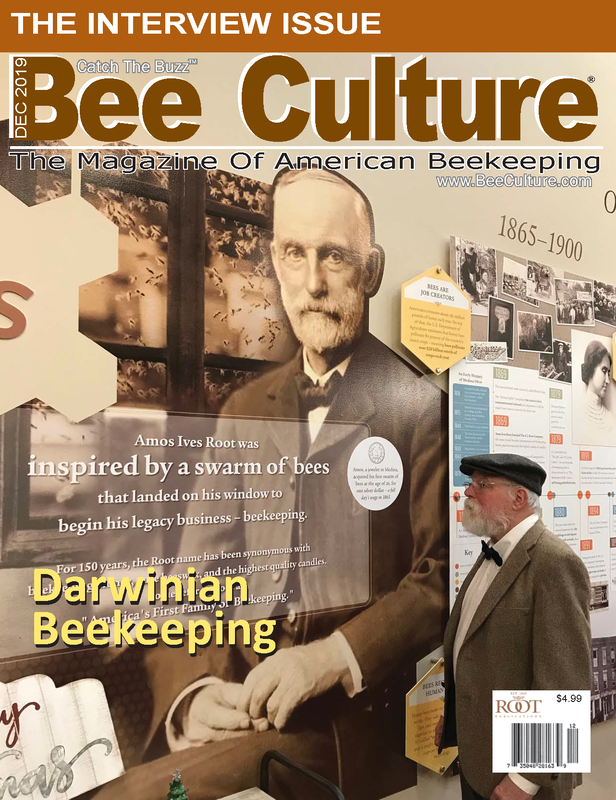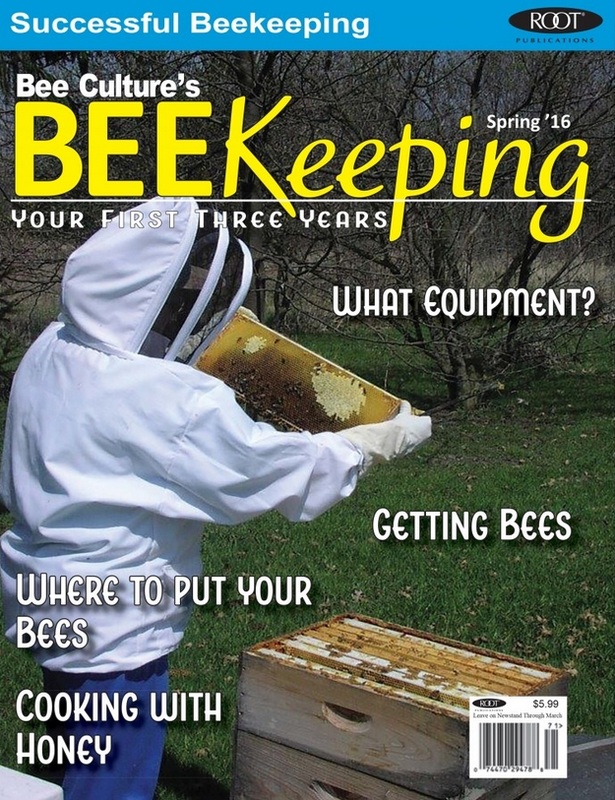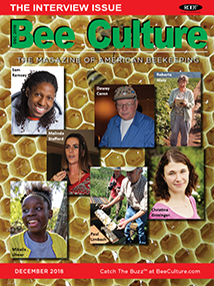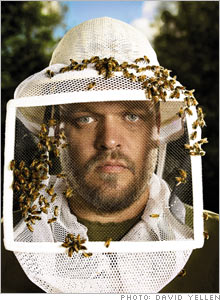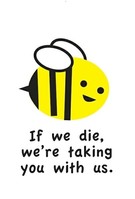Beginnings
Bill Ahaus wrote an article about how the club got started and Jeff Bergland gathered the historical facts:
| History of the TVBC |
The Honey Bus
|
Treasure Valley Reads project will explore “The Honey Bus: A Memoir of Loss, Courage and a Girl Saved by Bees” by Meredith May.
More information on the Treasure Valley reads website. |
Beekeeping Magazines for All Levels of Beekeeping
TED Talks by beeks that have visited the Treasure Valley
|
Marla Spivak - Why Bees Are Disappearing
June 2013 Marla Spivak, Boise
November 2012 Honeybees have thrived for 50 million years, each colony 40 to 50,000 individuals coordinated in amazing harmony. So why, seven years ago, did colonies start dying en masse? Marla Spivak reveals four reasons which are interacting with tragic consequences. This is not simply a problem because bees pollinate a third of the world’s crops. Could this incredible species be holding up a mirror for us?
|
|
Hive Health
2016 Honey Bee Diseases & Pests: A companion to Beekeeping in Northern Climates
Marla Spivak & Gary Reuter
Description: Updated for 2016. This 34-page booklet contains up-to-date information on controlling diseases, parasitic mites and other pests of honey bees. For beekeepers, entomologists, and apiculture students. This is included with the Beekeeping in Northern Climates package but is available here for the most up to date information and purchase alone.
Purchase $7.50
Download PDF Free. If you wish to donate see UM Giving page.
Marla Spivak & Gary Reuter
Description: Updated for 2016. This 34-page booklet contains up-to-date information on controlling diseases, parasitic mites and other pests of honey bees. For beekeepers, entomologists, and apiculture students. This is included with the Beekeeping in Northern Climates package but is available here for the most up to date information and purchase alone.
Purchase $7.50
Download PDF Free. If you wish to donate see UM Giving page.
"Effective Use of Oxalic Acid to Suppress Varroa with Marion Ellis"
"I particularly like this method because, as you can see, there are mites lying on their backs kicking their legs and really suffering, and it really makes me feel good to see that."
At 10 minutes, 30 seconds in http://tinyurl.com/joae7tx
Published on Mar 18, 2016
With its high efficacy and low risk of contamination, many beekeepers are looking to use Oxalic Acid this year. We have brought in an expert panelist, Marion Ellis Ph.D, to better explain the use of Oxalic Acid. As an entomologist, his research into the effects of Varroa and other parasites on honey bee colonies have given beekeepers insight into better hive management.
At 10 minutes, 30 seconds in http://tinyurl.com/joae7tx
Published on Mar 18, 2016
With its high efficacy and low risk of contamination, many beekeepers are looking to use Oxalic Acid this year. We have brought in an expert panelist, Marion Ellis Ph.D, to better explain the use of Oxalic Acid. As an entomologist, his research into the effects of Varroa and other parasites on honey bee colonies have given beekeepers insight into better hive management.
What's Wrong With My Hive?
Great photos of frames, both healthy and diseased.
Why Did My Bees Die?
Did cold weather take out your bees in the Fall? Do you think you might be experiencing Colony Collapse Disorder here in the Valley? Are yellow jackets decimating your hives? How could a strong healthy hive crumble and disappear virtually overnight? Could pesticide spraying by your neighbors be the cause of a weak colony?
Click the title above for a link or follow the link below for the most probable answer for your honey bee health problems: https://beeinformed.org/2016/03/08/why-did-my-honey-bees-die/ Varroa Mite ManagementThis idea was stolen, fair & square, from Randy Oliver. Folks living outside of Boise might want to follow the methodology in the ScientificBeekeeping.com article instead of using this chart. The graph illustrates the treatment periods in color. Light blue is the thymol application period, formic acid is pink and hop beta acids are shown on the tails of the calendar during the broodless period. In the case of thymol, the dates assume that thymol is on for 4 weeks and the supers can go on right after the product is removed, per the label.
Formic acid is bounded by temps. The color areas show the application period, and the dates assume a three week application window. The application period is only 7 days. This may be a little obtuse. Check it out and send any questions. The intent here is that we can have a tool for the beginning beeks to use when trying to figure out when and with what to treat for that despicable, nasty varroa mite.
Rosenkranz on Mites, 2010
The most thorough and comprehensive review available. Download here. This piece is heartily endorsed by the TVBC "Mite Kraut."
"This review provides a survey of the current knowledge in the main fields of Varroa research including the biology of the mite, damage to the host, host tolerance, tolerance breeding and Varroa treatment. We first present a general view on the functional morphology and on the biology of the Varroa mite with special emphasis on host–parasite interactions during reproduction of the female mite. The pathology section describes host damage at the individual and colony level including the problem of transmission of secondary infections by the mite. Knowledge of both the biology and the pathology of Varroa mites is essential for understanding possible tolerance mechanisms in the honey bee host. We comment on the few examples of natural tolerance in A. mellifera and evaluate recent approaches to the selection of Varroa tolerant honey bees. Finally, an extensive listing and critical evaluation of chemical and biological methods of Varroa treatments is given." Small Cell Beekeeping - Effective Varroa Control?
|
2016 Honey Bee Diseases & Pests: A Companion to Beekeeping in Northern Climates
Spivak, M.; Reuter, G. Description: Updated for 2016. This 34-page booklet contains up-to-date information on controlling diseases, parasitic mites and other pests of honey bees. For beekeepers, entomologists, and apiculture students. This is included with the Beekeeping in Northern Climates package but is available here for the most up to date information and purchase alone. Purchase $7.50 Download PDF Free. If you wish to donate see the UM Giving page. Varroa Mite Management, Part Deux
Videos produced by the coalition to show methods of controlling Varroa:
https://www.youtube.com/channel/UC_-KDhSDvivlXaHW-cfx37w Main website with guides and information: https://honeybeehealthcoalition.org Every honey bee colony in the continental United States and Canada either has Varroa mites today or will have them within several months. Varroa mite infestation represents one of the greatest threats to honey bee health, honey production, and pollination services. When honey bee colonies are untreated or treated ineffectively colonies can fail and beekeepers can incur major economic losses, and, ultimately, agricultural food production may be impacted. In addition, colonies with Varroa are a source of mites that can spread to other colonies, even in other apiaries, through drifting, robbing, and absconding activity of bees. All beekeepers should remain vigilant to detect high Varroa mite levels and be prepared to take timely action in order to reduce mite loads. Effective mite control will reduce colony losses and avoid potential spread of infectious disease among colonies. This Guide will explain practical, effective methods that beekeepers can use to measure Varroa mite infestations in their hives and select appropriate control methods. The Honey Bee Health Coalition offers this Guide free of charge and asks that you please reference the Coalition if distributing. | ||
Idaho Beekeeping Statutes and Ordinances (under construction)
Boise City Beekeeping Ordinance
Mike Cooper's Presentation on Honey Labeling, (TVBC May 2015 Meeting)
Jodi's Presentation
Jodi, from the Department of Agriculture made a presentation to the club in February. Below is the powerpoint slides:
Winterization GuideHere is a guidebook for winterizing your bees written by:
Eliese Watson at Apiaries and Bees for Communities in Alberta, Canada. www.backyardbees.ca
BYLAWS
Build It Yourself (Bee Source)
| |||||||||||||||||||||||||||||||||||
Bee Havers
|
| ||
Helpful Websites
http://scientificbeekeeping.com
https://beeinformed.org
https://honeybeehealthcoalition.org
https://beeinformed.org
https://honeybeehealthcoalition.org
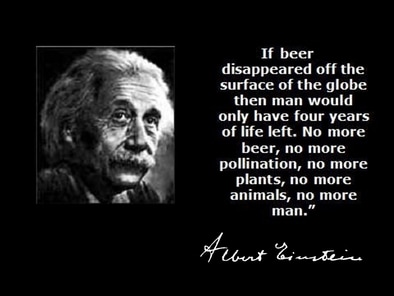
"Bees" & "Beer" - There's only one letter difference.
Pay attention, It's a Dawg-Eat-Dawg World Out There and Keeping Your Bees Healthy is Your Primary Beekeeping Job.
Varroa Management (2015) - by Dr. Dewey Caron
Plants for Pollinators o the Intermountain West
NRCS Technical Note
| Northwest Pollinator Plants |
Montana Native Plants for
Pollinator-Friendly Plantings
USDA Booklet
| USDA Pollinator Friendly Plants |
Native Plants Attractive to Honeybees
Table of plants for this region
| Native Plants for Honeybees |
Small Hive Beetle Info
Articles on the small hive beetle:
| Small Hive Beetle |
| Small Hive Beetle Handbook |
| Hive Beetle Map |

